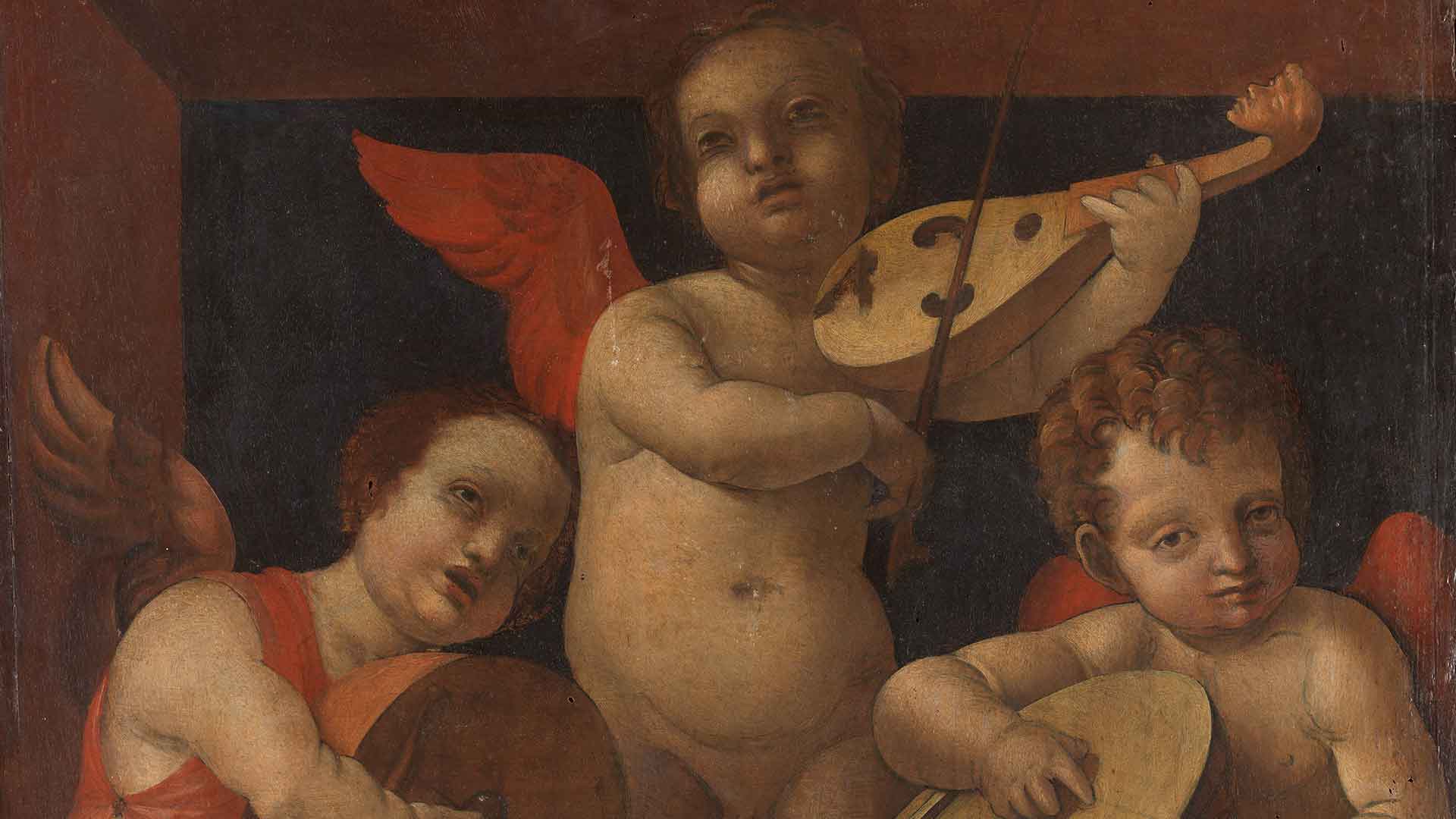
THE REBIRTH
OF SANTA MARIA DI BRERA
Fragments of an illustrious season of art
The Singing Angels and Angel Musicians that Bernardo Zenale painted c. 1500 for the organ loft made by Domenico Baldi between 1499 and 1507, are not the only artistic legacy of Santa Maria di Brera to have survived from the Renaissance period.
Much has been lost, starting, for instance, with the organ doors themselves which Giorgio Vasari was the first to attribute to Bramantino in his Lives of the Artists (1568) and which were renowned for their bold handling of perspective. What remains – most of it now in the Pinacoteca di Brera – reveals that some of Milan’s leading artists were involved in decorating the church at the turn of the 15th century.
Girolamo Tiraboschi in his Vetera Humiliatorum monumenta, 1766-1768, associates the church’s renovation with Primo Crispi, the parish priest from 1498 to 1512 and Vicar of the Umiliati in 1503.

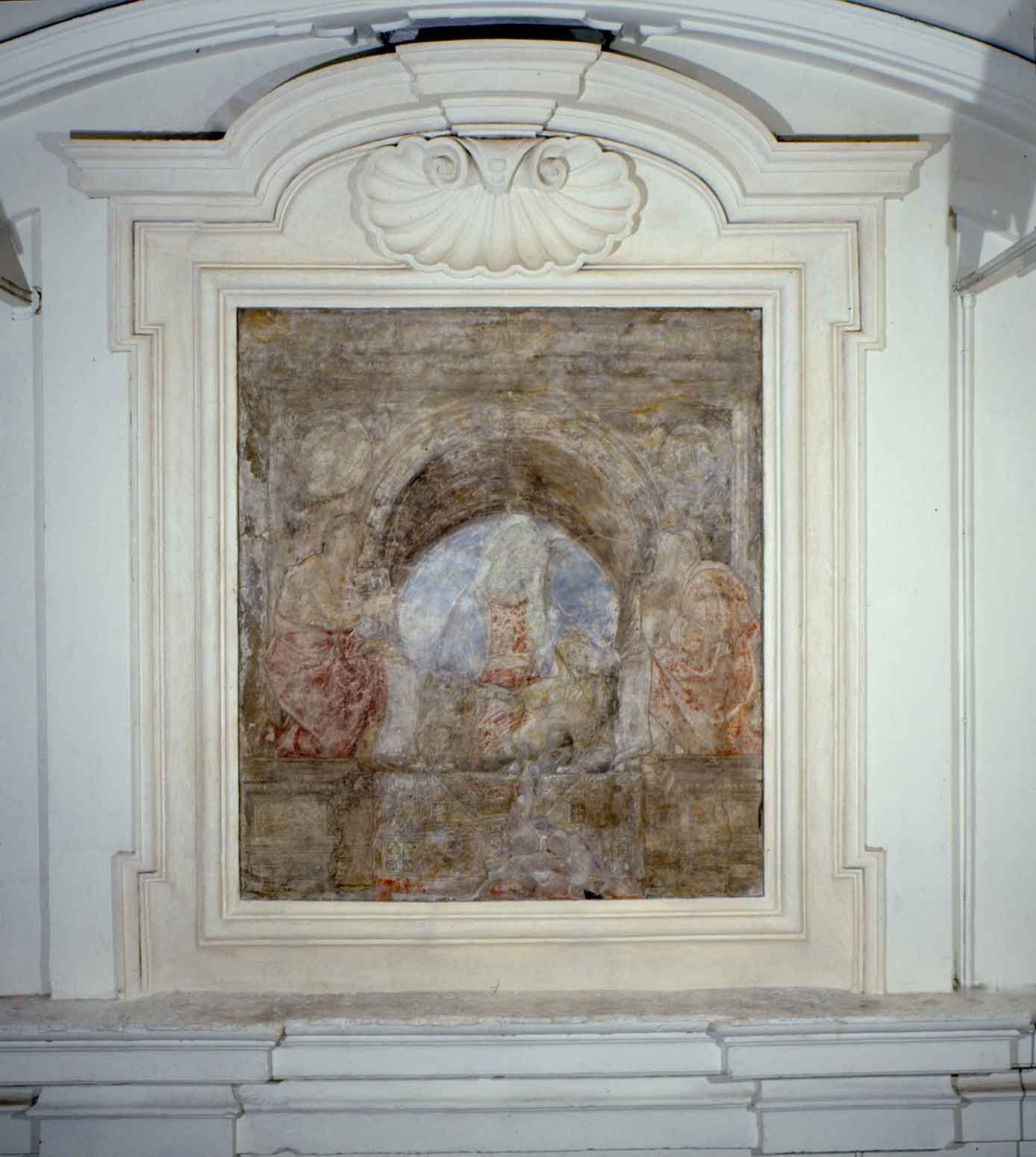
The Madonna of the Carpet by Vincenzo Foppa, 1485
Vincenzo Foppa frescoed one of his masterpieces in Santa Maria di Brera, a Madonna and Child with St. John the Baptist and St. Stephen known as the Madonna of the Carpet. Dated 1485, it shows the artist’s interaction with Bramante, from whom he drew inspiration for his handling of perspective and his architecture “in the Classical style”.
We do not know the Madonna of the Carpet’s original position. When the Jesuits renovated the church, the fresco was detached using the a massello technique (i.e. with the wall behind it) and moved to the sacristy. It was detached again in 1808 and moved to the embryonic Pinacoteca. What was once the sacristy and is now part of the Accademia di Belle Arti still houses the sinopia in a 17th century frame.
The Tonsi Chapel: Vincenzo Foppa and Bernardino Luini
At the turn of the 15th century, the Tonsi family, who were firmly established in the administration of the Duchy under the Sforza and during the French domination, held the patronage of the first chapel on the left in Santa Maria di Brera.
The Martyrdom of St. Sebastian, originally frescoed in the chapel, can be dated to a decoration campaign of c. 1486–8. It marks the moment of greatest proximity between Foppa and Bramante on account both of its handling of perspective and architecture, and of the figures’ features which are reminiscent of those of the Men at Arms that Bramante frescoed in the home of the poet Gaspare Visconti.


In the same chapel Foppa also frescoed the altarpiece, of which the upper part depicting Christ the Redeemer has survived. It was discovered in 1901 with the detachment of Bernardino Luini’s fresco of God the Father, which had been painted over it.

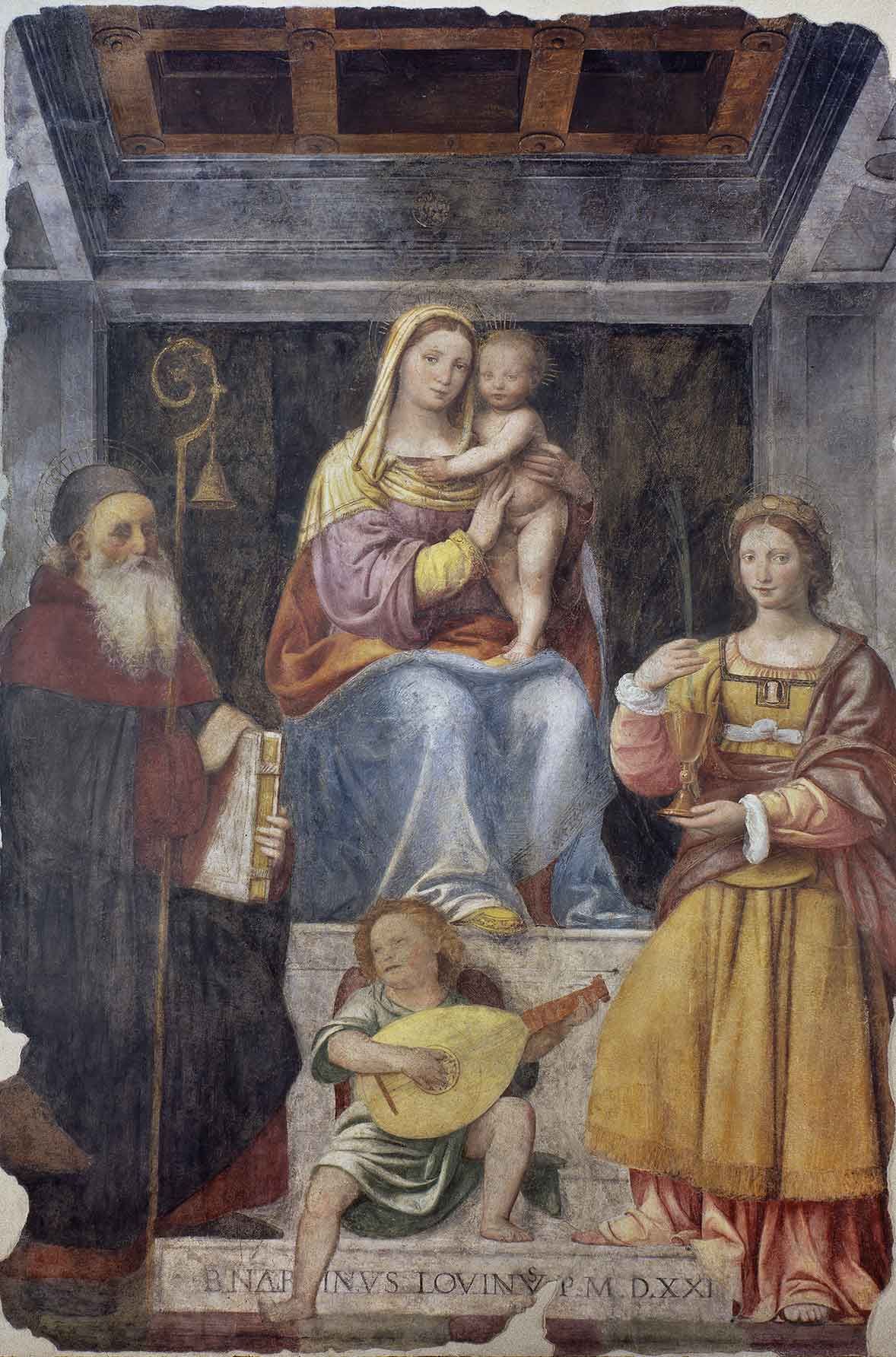
Bernardino Luini intervened on the fresco previously painted by Vincenzo Foppa when he was commissioned in 1521 to paint God the Father and the Madonna and Child with St. Anthony the Abbot, St. Barbara and an Angel. Divided into two parts and displayed at the entrance to the Pinacoteca in 1808, it is now on permanent loan to the Museo della Scienza e della Tecnologia Leonardo da Vinci.
A number of suggestions have been put forward as to why one fresco was painted on top of the other. Christ the Redeemer may have been unfinished or may have deteriorated. Giovan Battista Tonsi hired Luini shortly after becoming the parish priest of Santa Maria di Brera, while the jurist Michel Tonsi, Giovan Battista’s father, had hired Foppa.
In any event, Luini spared his predecessor’s Martyrdom of St. Sebastian and completed the decoration with St. Roch and the Angel and, on the back wall, with a Madonna of Loreto, all trace of which has been lost after it passed through the Melzi and Roverselli collections in the 19th century. We can get an idea of what it may have looked like from this drawing in the Gabinetto dei Disegni e dalle Stampe degli Uffizi.
Luini was hugely successful in his day thanks to his learned and pleasing style combining the influence of Bramantino and Zenale with a certain familiarity with the work of Raphael which he had seen when visiting Rome.
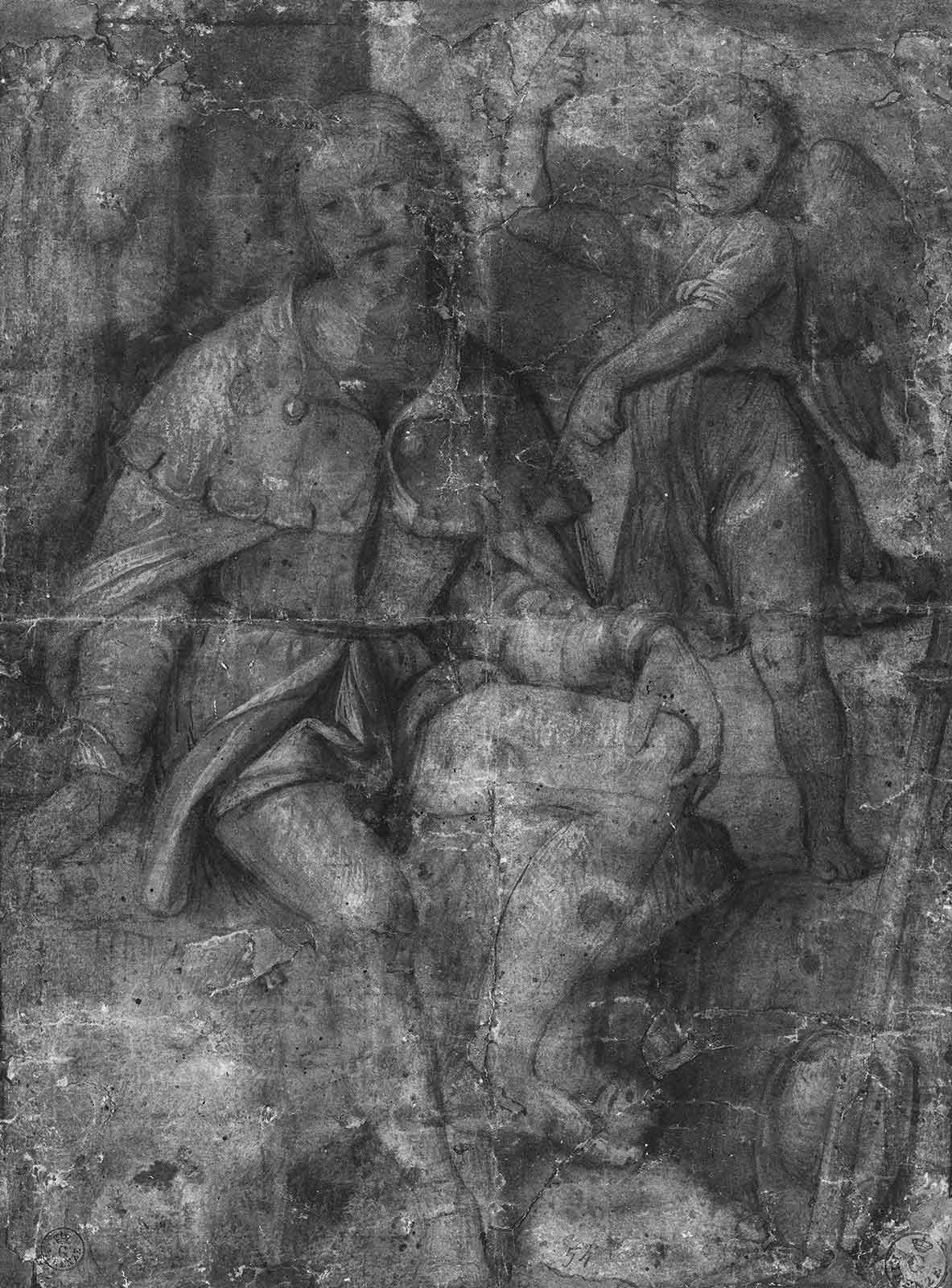
The Shadow of Bramantino
In addition to the lost organ doors, the sources also attribute to Bramantino – or alternatively to Bramante – the fresco in the lunette over the door of the church of Santa Maria di Brera (demolished 1809/10).

We can only get an idea of what the lunette looked like from an illustration of the façade in Ferdinando Cassina’s Le fabbriche più cospicue di Milano published in 1744, showing an image of the Virgin Suckling the Christ Child with an Angel and St. Joseph. Bramantino is recorded as working in Santa Maria di Brera as early as in 1507, when he witnessed a notary’s deed concerning Primo Crispi.
Zenale and Santa Maria di Brera: a lasting bond
Zenale’s history with Santa Maria di Brera was not restricted to the panels for the organ loft painted c. 1500. It was a long-term relationship. He painted a Pietà with St. Jerome, St. John the Baptist, St. Gothard and St. Sebastian (now in the Musée du Louvre) for the Chapel of St. Jerome c. 1498–9.
Between 1501 and 1502, Primo Crispi tasked Zenale with representing the convent in an estimate of the moveable goods belonging to the painter Francesco Napoletano who had died in Venice in 1501.
And lastly, Zenale painted a Madonna and Child with St. James, St. Philip and the Family of Antonio Busti – one of the most representative altarpieces of his mature period, very close in style to Luini – for the Chapel of St. James and St. Philip between 1515 and 1518.
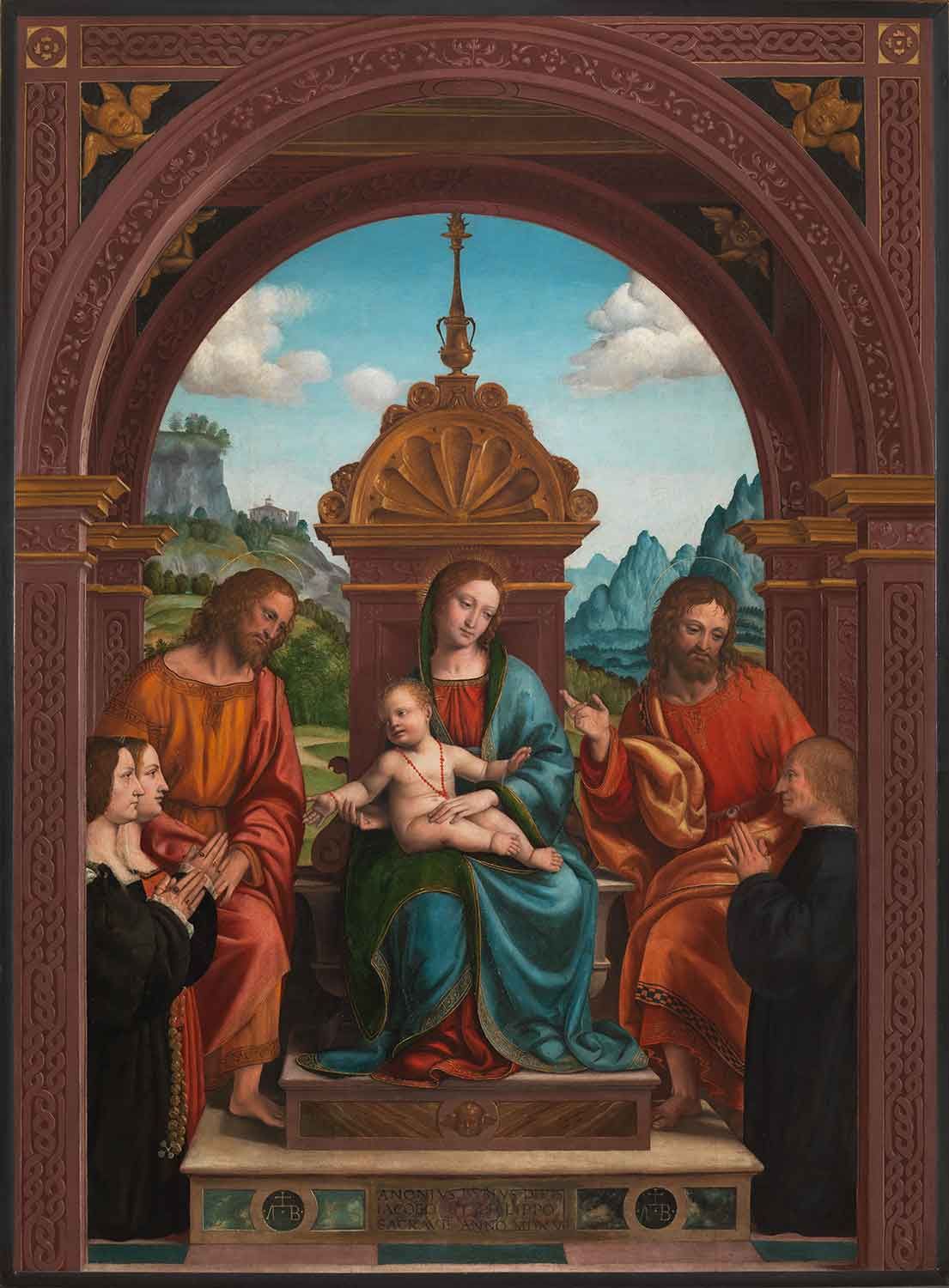
The date 1515 on the base of the Virgin’s throne between two tondoes with the patron’s initials refers to the consecration of the chapel. Zenale and a woodcarver named Bernardino Corio da Legnano were not paid for the altarpiece’s now lost frame until 1518.

